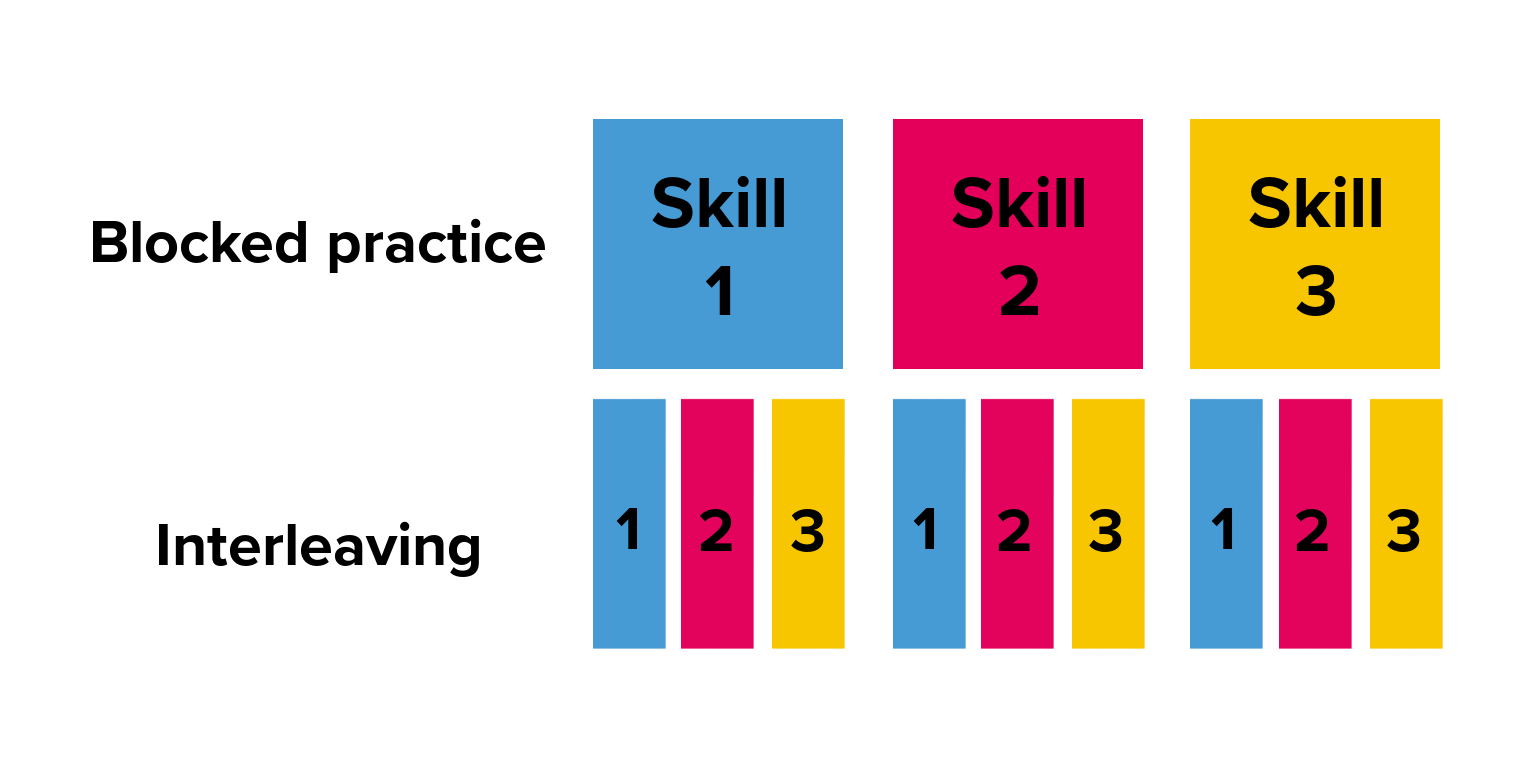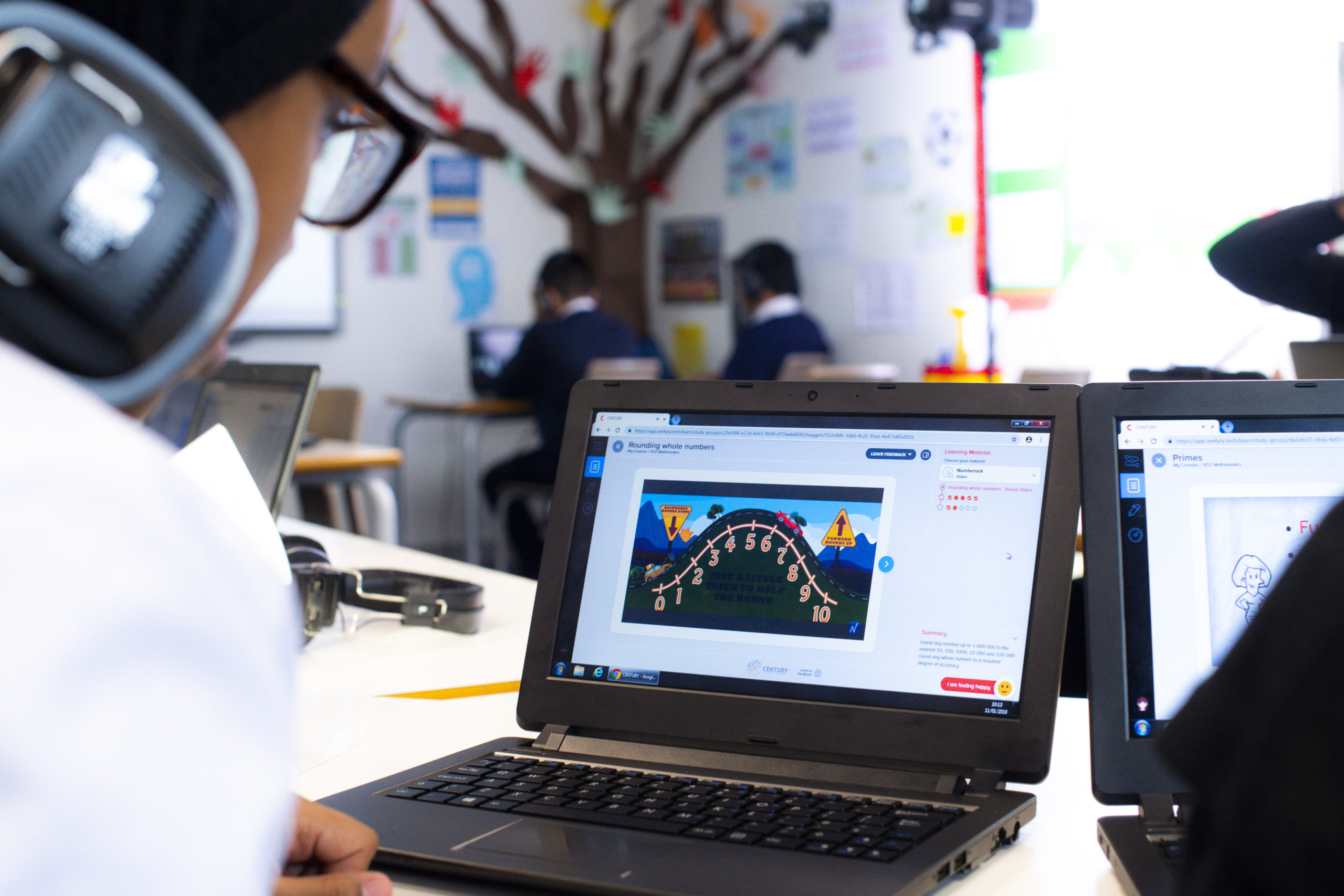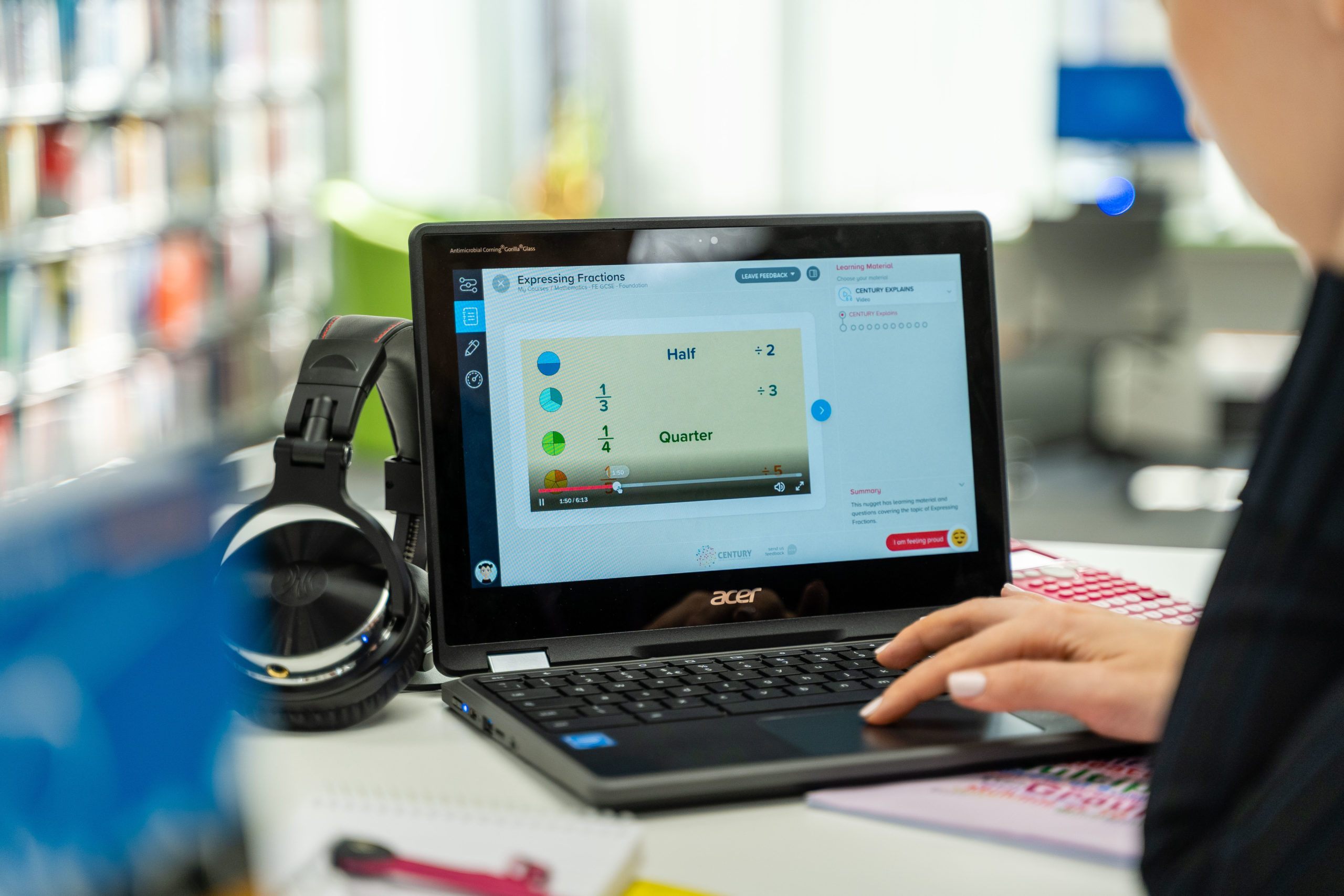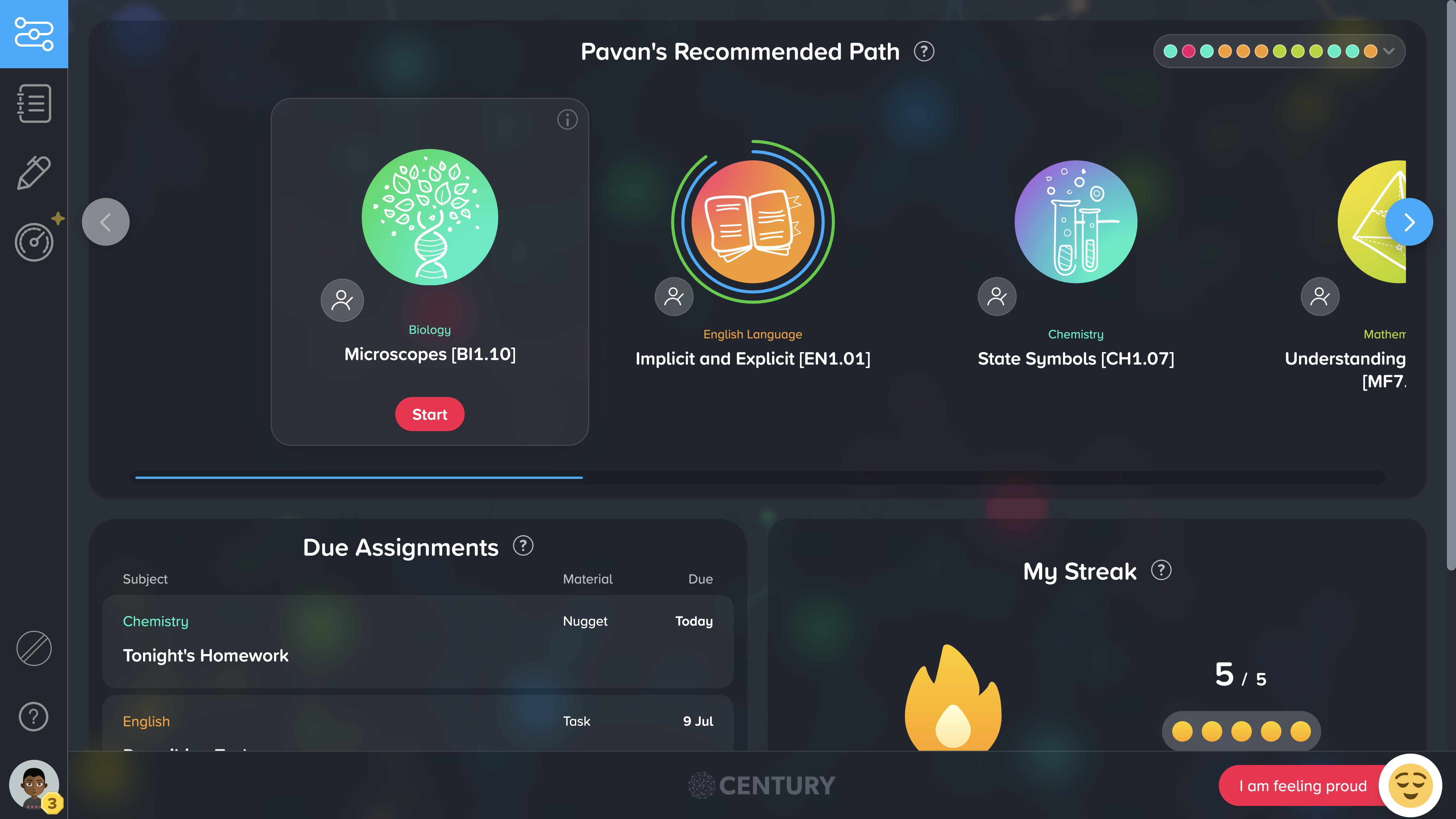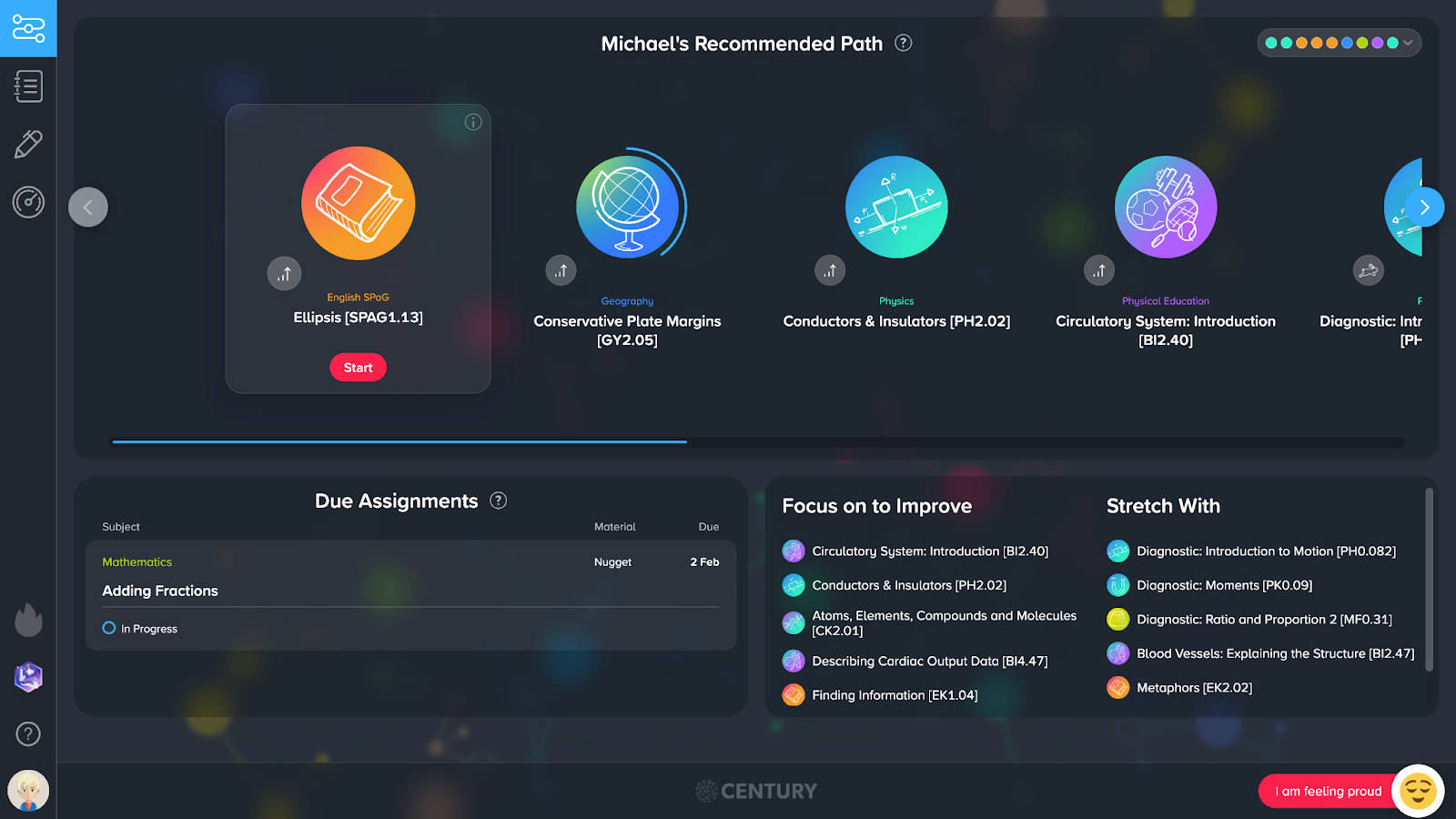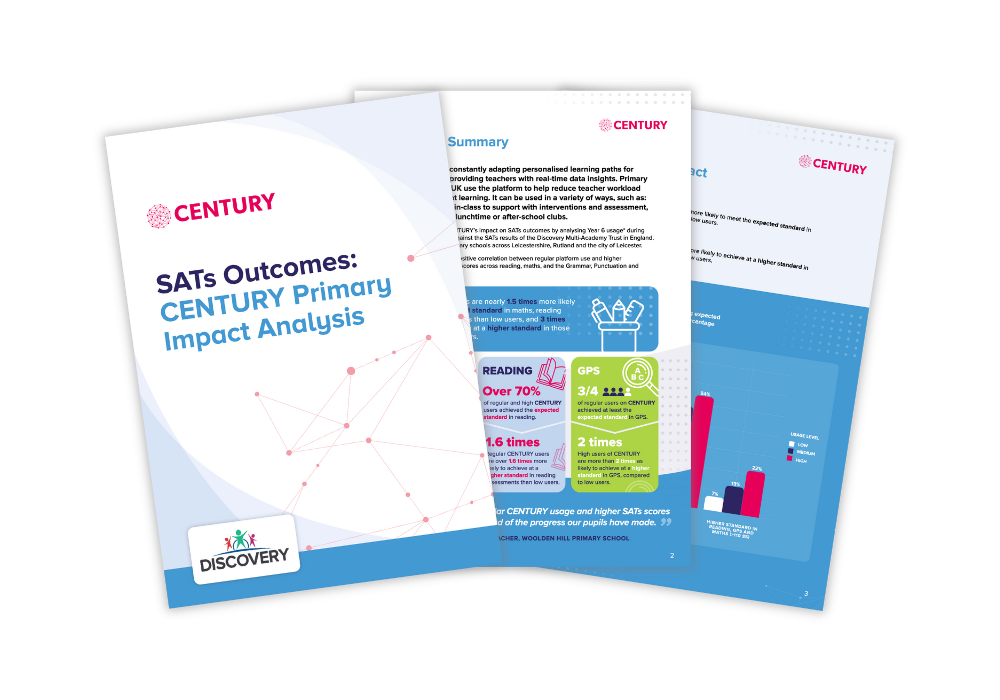Estimated reading time: 8 minutes
Former teacher and CENTURY Curriculum Expert Camilla Turze explains the concept of interleaving and how it can work in practice.
Interleaving is the mixing and alternating between ideas, concepts or skills when learning, as opposed to blocking, which is when students study one topic fully before moving on to another.
The process of continually retrieving the appropriate information for a task and bringing it into our short term memory can strengthen the neural connections between different tasks and correct responses. The result of this is better long-term retention of information than blocking, which is why leaders in research on human memory Elizabeth and Robert Bjork called interleaving a ‘desirable difficulty’.
In a study by Doug Rohrer and Kelli Taylor, for example, students were split into two groups and taught how to solve various problems over two sessions. In one of the groups, the practice problems were taught in a blocked sequence, and in the other group, the problem types were mixed.
During the sessions, those who had taken part in the blocked sessions performed better, scoring an average of 89% in practice problems, with those in the interleaved group scoring an average of 60%.
However, one week after the second session, all of the students were asked to take a test that contained a range of the problem types that had been covered across both sessions, and the ‘Mixers’ greatly outperformed the ‘Blockers’, with the former scoring 63% and the latter 20%.
The students who had experienced interleaved learning appeared to be better prepared to identify which problem type each question was, and therefore to select the correct method to answer correctly, whereas the ‘Blockers’ had been able to solve each problem immediately after they were shown how to do so, but were unable to distinguish between problem types and recall the solution to them when presented with a range of questions out of context.
This supports cognitive psychologist Sean Kang’s research, which found that ‘interleaved practice seems to help learners differentiate among the types of problems they are learning to solve’.
This discrepancy between our immediate ability to recall information and our ability to do so later on can also lead to an ‘illusion of mastery’ – when students repeat the same style of question repeatedly, one after another, it can leave them feeling as though they have completely mastered a topic and can move on, but the knowledge is not actually encoded in their long term memory.
Preventing confusion
There is evidence suggesting that interleaving can help students to identify the differences between concepts that are often confused with one another, for example ‘osmosis’ and ‘diffusion’ in biology and similar spellings in English (e.g. ‘allusion’ and ‘illusion’). These errors tend to occur more frequently if students’ exposure to similar concepts or terms is blocked together, as this often does not require the learner to distinguish between them. With interleaving, these skills can be separated out, forcing learners to gain a deeper understanding of each of them.
Limiting factors
Not every study has found interleaving to be effective, and there are some things to think about when considering how to integrate it into your teaching.
In a study by Hannah Hausman and Nate Kornell (2014), for example, participants with no prior knowledge of Indonesian were split into three groups – unmixed (blocked), spaced, and mixed (interleaved) conditions – and were asked to study 32 flashcards, consisting of 16 with Indonesian terms and their translations on and 16 with anatomical terms on. All participants were then all given the same final recall test.
The results of all four experiments in the study, two of which required the participants to study the terms on a single day and two on two separate days, showed that mixing had had no reliable effects on results. This might indicate that students require prior knowledge of the topic in order for interleaving to be effective, and that the topics being interleaved should be somehow related.
It is important to recognise that it also takes time to reap the benefits of interleaving, as Doug Rohrer and Kelli Taylor’s aforementioned study demonstrated by finding that learners achieved higher test scores in the short term after blocking.
So, how can CENTURY be used for interleaving?
Outside of the classroom, CENTURY automatically enables interleaving while learners are studying independently. For example, the memory boost function on the platform brings nuggets that students have previously completed back into their personal pathways to boost memory retention.
Diagnostics, which are sets of questions that allow the artificial intelligence to determine which topics in a course a student knows and doesn’t know, can also be assigned at the end of a course. This will ensure that topics from the completed course will continue to appear on their pathway, mixed in with nuggets from the new course that they are working on.
Within the classroom, a popular way to integrate interleaving is to spend some time at the start of a lesson revisiting a previously studied topic before moving onto the new content. In practice, though, I know as a former teacher myself how time consuming lesson planning and resource creation for one topic is, let alone having to create additional resources and activities to revise old content within the same lesson.
By using CENTURY, interleaving can be worked into lessons as a starter activity without increasing teachers’ workloads. Aside from the platform’s AI automatically providing learners with interleaved nuggets, teachers can search for and assign a short nugget, which include videos, slideshows and questions that have been created by teachers, on a topic that they would like their students to revisit at the start of the lesson.
If there is not enough time during a lesson to do this, teachers can set nuggets on old topics as homework. With thousands of resources available on the platform, all designed by experienced teachers, children can benefit from interleaving in a way that is designed to maximise the time they spend learning.
Book a demo to find out more about how CENTURY can help to enhance the teaching and learning at your school or college.


